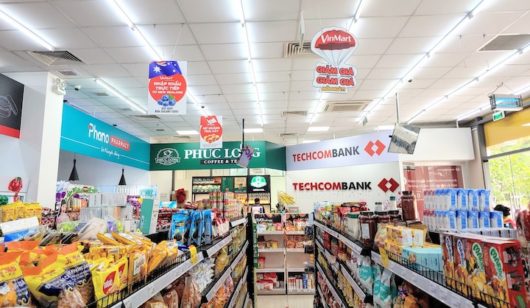While sales at big retailers and chain stores edged up 3.02 per cent for the first quarter this year, consumer spending is still weak, says the Thai Retailers Association (TRA).
It also warns that should government stimulus taper off, sales growth at the big retailers could dip below 3 per cent for the first half. On the other hand, efficient government spending could boost growth to 3.2 per cent.
TRA monitors the sales of department stores, big supermarkets and chain stores – a sector it labels the modern retail segment – which account for more than 32 per cent of the total retail spending in Thailand.
President Jariya Chirathivat says the group’s forecast of first-half sales growth of up to 3.2 per cent is drawn from analysis of data for the services sector, which covers three industries: property and construction, banking and finance, and retail.
In the first quarter, profits in banking and finance stayed strong despite a rise in non-performing loans, while incomes and profits were flat, she says.
Property and construction showed slow growth, with the financial results of the top five listed construction companies revealing lower sales and profits.
For retail, sales growth has been seen for the leading listed retailers, mainly driven by store expansion, while same-store growth is limited.
Jariya says the slightly improved macroeconomic situation in the first quarter is not enough to spur significant growth.
In its Retail Landscape report, global information company Nielsen says the fast-moving consumer goods sector posted slightly negative growth in the first quarter. Sales growth for durable and semi-durable goods was stable, but with no signs of a recovery emerging.
Segment analysis
TRA’s analysis of the sales growth in each segment it tracked for the first quarter…
1. Durable goods: This segment grew at just 1.25 per cent, reflecting a sluggish environment in the construction and housing sector. Sales of home appliances grew only slightly because of a tightening in consumer credit. While sales in the mobile-phone and camera sub-segment grew by 3 per cent, volumes were small.
2. Semi-durable goods: This sub-sector showed slowing growth of 2.3 per cent, despite tourist arrivals increasing by 5 per cent. The main issue, says the TRA, is higher import duties on luxury goods than for Thailand’s regional peers, leading to slower growth in fashion, cosmetics and leather goods. It also noted the impact of the nationwide mourning period for the late King Bhumibol Adulyadej. Brand-name fashion shopping remained in the doldrums, although sales of sportswear and healthcare products grew strongly.
3. Non-durable goods: Sales growth of 3.4 per cent in the first quarter was a highlight. Despite a slow economic recovery, growth in this sub-sector was maintained. Rising crop prices gave increased income to farmers, a key base of the non-durable segment, resulting in increased consumption. The TRA says cash is clearly reaching the pockets of the grassroots population, helped by more efficient government distribution of funds to the regions. The segment has recovered significantly, contributing 68 per cent of total retails sales in the businesses the TRA tracks.
Positive factors flowing into retail spending in the quarter included an 0.6 per cent rise in the Consumer Confidence Index, export growth of 4.9 per cent, and the 5 per cent growth in tourist arrivals. The increase in crop prices contributed to a 15.4 per cent gain in the automotive market.
However, the TRA identified pressures coming from a lag in launching mega-projects planned under the government’s infrastructure push. Additionally, private-sector investment has not recovered.
Reduced growth in both sales and profits reported by listed companies in the first quarter is also cause for concern, says the TRA.
Household debt is forecast to be stable at 80.2 per cent of GDP, while the consumption of durable and semi-durable goods may slow down.
About 14 million people work in the retail and service sectors nationwide, with 6.2 million in the retail sector. TRA members last year employed more than 450,000 people, recruiting about 45,000 a year.
However, the trade group warns of labour shortages in the retail sector, citing factors such as an ageing population. It wants to see legal changes to support more flexible hiring policies.





